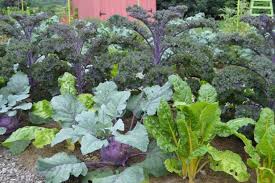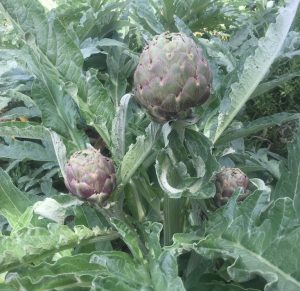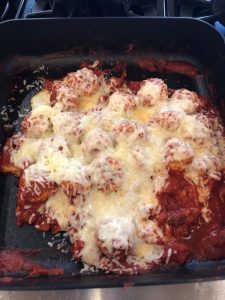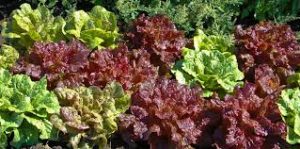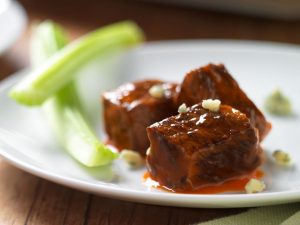Here are a few Cooking From The Pantry recipes for you to enjoy. For more ideas on how to stock your pantry and learn new ways to cook, check out my first book, ‘What’s In Your Pantry’. Available below

No-Knead Cranberry Nut Bread
- 3 cups + 2 Tablespoons all-purpose flour, plus more for hands
- 2 teaspoons coarse sea salt
- ½ teaspoon yeast
- ¾ cup chopped walnuts
- ¾ cup dried cranberries
- 1 tablespoon honey
- 1 ½ cups warm water
Stir the first 6 ingredients together in a large bowl. Stir in the warm water. The dough will be sticky. Gently shape into a ball as best you can. Cover tightly with plastic wrap or aluminum foil. Set on the counter at room temperature and allow to rise for 12-18 hours. The dough will double in size, stick to the sides of the bowl, and be covered in air bubbles.
Turn the dough out onto a lightly floured work surface and, using lightly floured hands, shape into a ball as best you can. Doesn't have to be perfect! Transfer dough to a large piece of parchment paper.
Using a very sharp knife, gently score an X into the top. Cover dough lightly with plastic wrap and leave alone for 30 minutes.
Preheat the oven to 475°. Place your Dutch oven (with the lid) inside for 30 minutes so that it's extremely hot before the dough is placed inside. After 30 minutes, remove the Dutch oven from the oven and carefully place the dough inside by lifting it up with the parchment paper and sticking it all-- the parchment paper included-- inside the pot. Cover with the lid.
Bake for 25 minutes with the lid on. Carefully remove the lid and continue baking for 8-10 more minutes until the bread is golden brown. Remove pot from the oven, carefully remove the bread from the pot, and allow to cool on the counter for 30
minutes before breaking/slicing/serving.
Cover and store leftover bread at room temperature for 1 week.
Adapted from Sally’s Baking Addiction
Oatmeal Fruit Bars
- 2 sticks unsalted, cold butter, cut into cubes
- 1 ½ cup flour
- 1 cup packed brown sugar
- 2 cup oats
- ¼ teaspoon salt
- teaspoon baking powder
- 1 8 oz. jar fruit spread
Preheat oven to 350°. Butter a 9x 13” baking dish and line the bottom with parchment paper.
In a medium size bowl, mix together the flour, baking powder, salt, oats and brown sugar. Stir together to mix the dry ingredients. Using a pastry blender or your fingers, mix the butter into the dry mix. If using your fingers pinch the butter into the dry mix to distribute the butter into small pieces about the size of a pea.
Press half of the mixture into the prepared pan. Spread the jar of jam or fruit spread evenly on top of the crust. Sprinkle the other half of the oat mixture on top of the fruit spread. Bake in your oven for 30 – 40 minutes. Cool completely in the pan. Cut into squares.
Recipe adapted from Just Jans
Chicken Parmigiana
- 2 boneless skinless chicken breasts, cut in half side to side (butterflied)
- Sea salt and pepper
- ¼ cup flour, approximately
- 1 teaspoon garlic powder
- 1 teaspoon ground Italian spices
- 2 eggs, lightly whisked
- 1 cup panko breadcrumbs
- ½ cup parmesan cheese, grated
- 2 tablespoons olive oil
- 1 cup marinara sauce
- ½ cup mozzarella cheese, shredded
Place chicken into a freezer type bag and pound until about ½” thick. Pound each piece until ½ inch thick. Sprinkle with salt and pepper.
Set up a dredging station, place each of the following next to each other beginning with the flour.
Mix flour with garlic powder and Italian spices, place on a plate or shallow dish for dredging.
Place whisked egg into a shallow bowl and set next to flour.
Mix breadcrumbs and Parmesan cheese and place into another shallow dish or plate next to the egg.
Serves 4
Dip the chicken pieces, one at a time into the flour, then egg and then the Parmesan breadcrumb mixture.
Heat a pan large enough to hold all the chicken pieces so they don’t touch, add olive oil and then the chicken, don’t overcrowd the pan or the pieces won’t brown. Cook until lightly browned then set aside, if needed, and cook remaining pieces.
When finished browning the chicken you can add them back to the pan or place on a sheet pan and top with a little marinara sauce and mozzarella cheese, broil until cheese has melted.
Serve immediately.
Fettuccini Alfredo
- 1 pound fettuccini
- 2 cups heavy cream
- ¾ cup grated Parmesan cheese
- 3 tablespoons butter
- 1 pinch ground nutmeg
- ground black pepper to taste
Serves 4
Cook pasta according to directions on package. Drain and set aside.
In a medium saucepan over low heat, heat cream and butter, stirring
constantly. When cream begins to simmer mix in a small amounts of Parmesan
cheese, stirring constantly, until all cheese is added, and sauce has
reduced. It should be thick and easily cover the back of a spoon.
Stir in nutmeg and black pepper. Toss with warm fettuccini and serve.
Meyer Lemon and Blood Orange Cannoli’s
- 1 15 oz. container of whole milk ricotta cheese
- 1/2 cup confectioners sugar
- 2 tablespoons white sugar
- 1 teaspoon vanilla
- 1 Meyer lemons, zested and juiced
- 1 Blood orange, zested
- Prepared Cannoli shells
Prepare the filling by combining all the ingredients in a bowl and mixing with an electric mixer until well-combined. Refrigerate for at least an hour and up to 2 days.
Fill a plastic zip bag with the ricotta mixture, snip off a corner of the bag, and pipe the mixture into the shells. Serve and enjoy!




